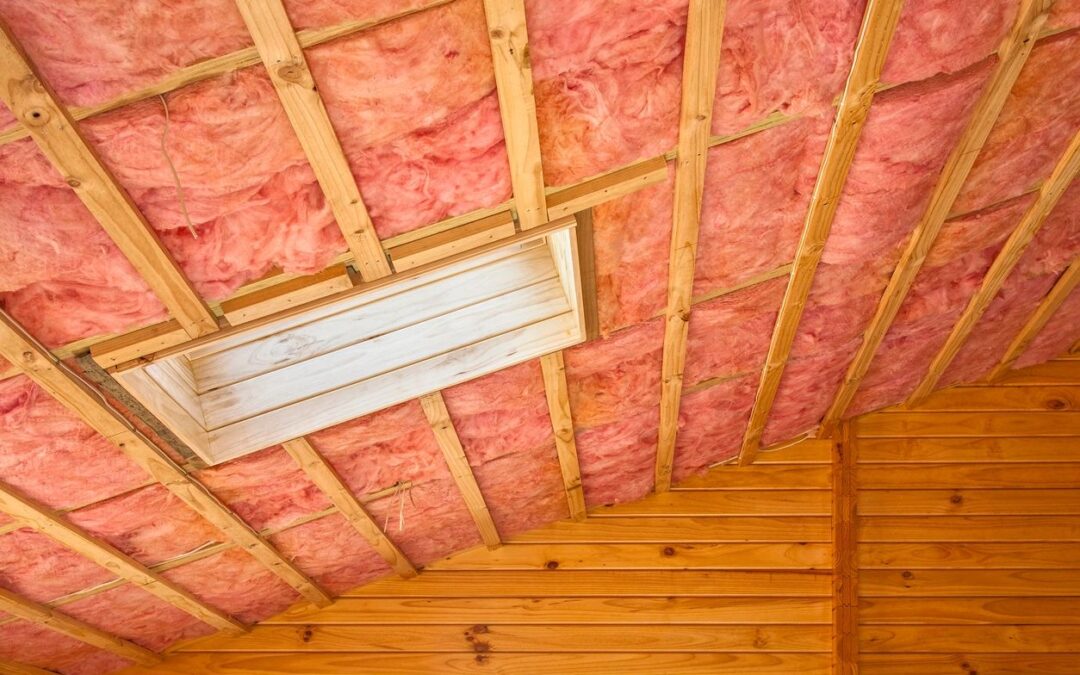As the leaves turn brilliant colors and the evening temperatures begin to fall, it is time to think about the value and many advantages of good insulation. Insulation is meant to keep heat out in the summer and in during the winter and is measured in “R-value” (with the higher the value the more resistant to heat transfer is the material). No other construction project works twenty-four hours a day, every day of the year from the date of the project to the last day of the building’s life.
In medieval times, in northern climates, the walls were stuffed with straw and mud plaster to try to keep out the cold, and tapestries were hung on the walls of palaces to fight the drafts between stones but these buildings were cold and drafty places. Insulation evolved very slowly until 1932 when the process to create fiberglass was discovered by accident. Over the next decade, this material was made into blankets (called “batts”) and began to be used widely to help make buildings more efficient and comfortable. This material quickly came to dominate the marketplace as the primary method of insulating American homes. Fiberglass insulation, while much better than the materials that preceded it had a few problems. It can release fine glass particles into the air that can damage the lungs and can cut the hands of the installer if not handled properly and it must be properly ventilated to prevent mold from growing on the paper liners. It is also hard to pack into odd-shaped spaces tight enough to prevent air drafts that kill the insulative effect of the material.
Another material that is still an important alternative is “Cellulose.” This is a broad description of one of the oldest forms of insulation – straw or other organic material made into a loose fill. Cellulose, while non-toxic, must be made fire retardant and mold resistant to be usable. This insulation, whether made from old newspaper, cotton, or other material, is blown into a wall cavity and has the tendency to fill the gaps but the insulation but will settle a bit over time potentially reducing its R-value.
Rigid Insulation is different in nature than either fiberglass batt or cellulose. This is typically made from polystyrene sheets of different thicknesses and it offers a very high R-value per inch of insulation. It is challenging to cut precisely to size for interior installation but it works well beneath new concrete slabs and around the outside of buildings, particularly their foundations.
Perhaps the greatest advances in the past 20-30 years in the area of spray foams. Although originally developed in the 1940s, spray-in polyurethane foams have become continually more popular since the late 1970s. The insulation is applied to the wall with two separate components interacting at the nozzle head to create a self-expanding chemical foam and the excess is trimmed off before the interior facing is added. It comes in two primary types: low density (“open-cell”) and medium density (“closed cell”).
Open-cell foams cure to a sponge-like material that is a good insulator but which allows water vapor to penetrate. It also produces sound damping quality but can only be used in interior conditions because of its permeability to water and water vapor. Because it has to be professionally installed with sophisticated equipment it tends to be more expensive than fiberglass or cellulose to install but offers excellent savings and performance in many instances.
Closed-cell foam has among the highest R-value of any mainstream insulation material commonly sold today. Like an open cell, it is sprayed onto the interior of the wall by professional installers and expands through a chemical reaction. Because it is higher density than an open cell it forms a hard Styrofoam-like texture which increases the strength and rigidity of the wall or roof structure. Because more of the polyurethane material is used it also tends to be among the more expensive materials to apply but can also save the building owner the most money over time. It is also generally impervious to water and water vapor so another water vapor does not have to be installed as part of the wall design.
Any building, whether a home or a business has the need to be well insulated, and the best solution from a cost and performance standpoint might be a mix of two or more different insulations each used where and when they can offer the owner the best aspects of their particular characteristics. Adding insulation is the most important part of every building project that is largely invisible – except in lowering your heating and cooling bills each month and decreasing the amount of global warming attributable to your building!
Looking to remodel your home? Let’s connect.
Join the Architectural Forum to stay up-to-date with architectural news from Rhode Island and abroad.
Ross Sinclair Cann, AIA, LEED AP, is, a historian, educator, and practicing architect living and working in Newport with A4 Architecture Inc. This article was initially published in Newport This Week, in ARCHI-TEXT, on October 10, 2013.
